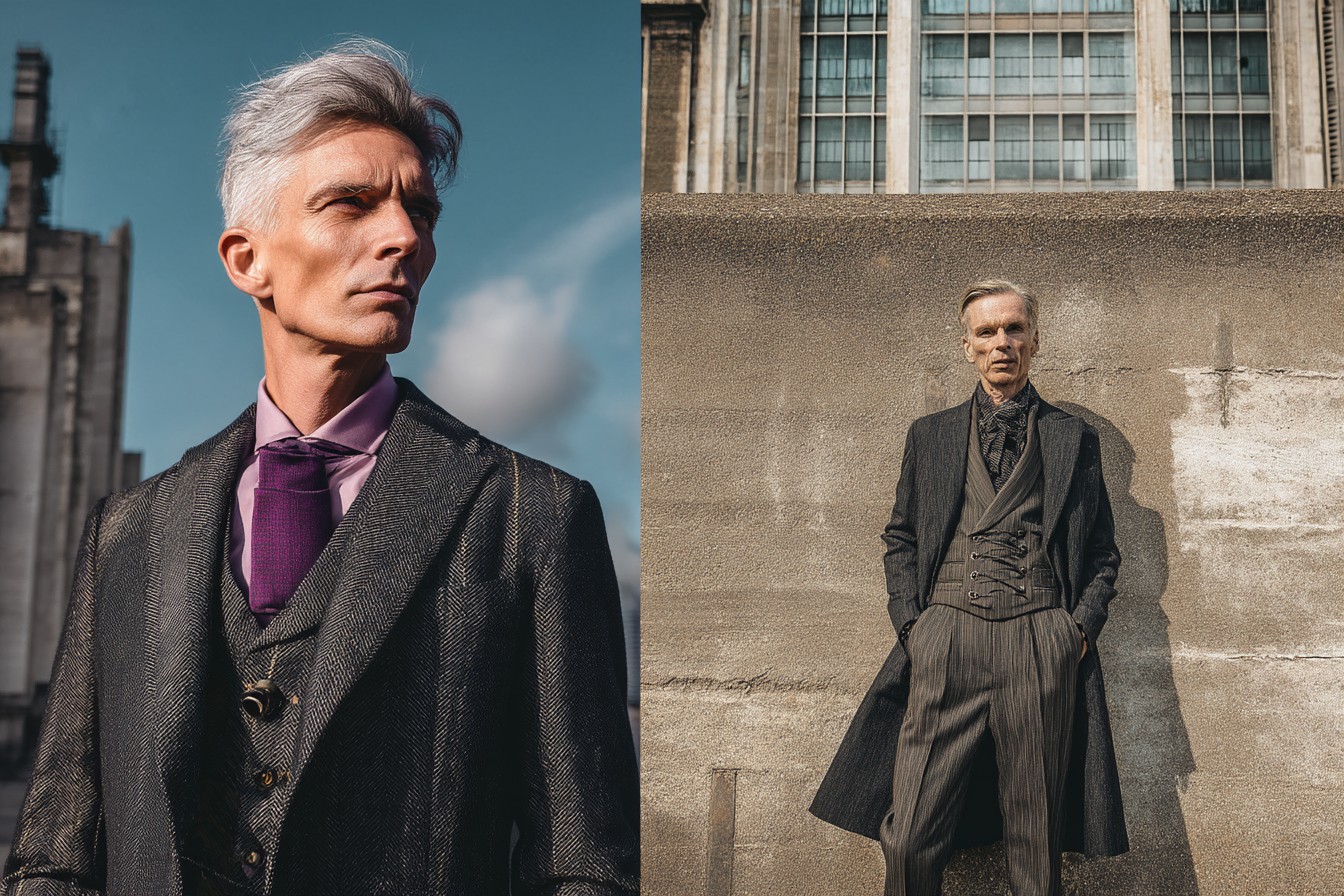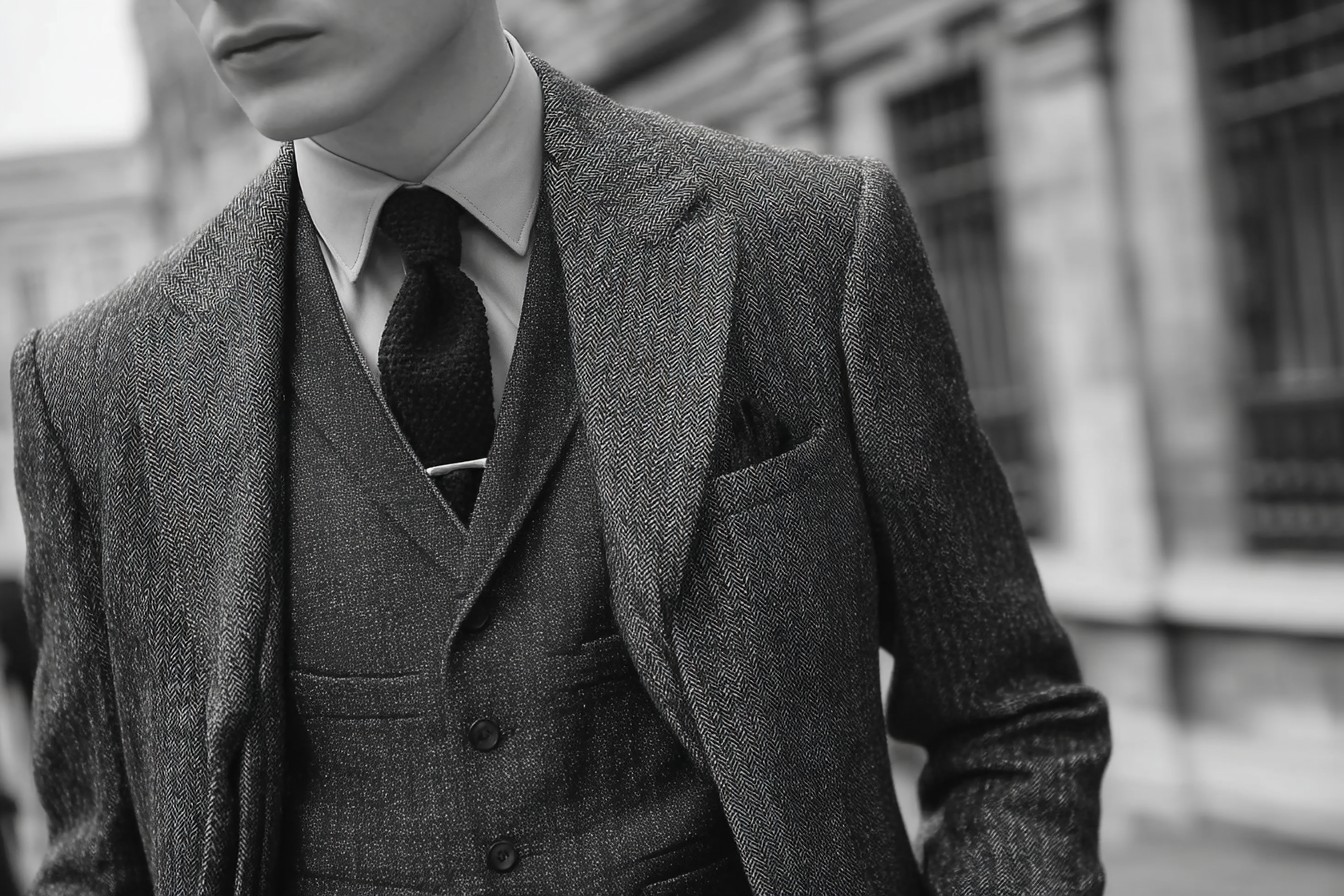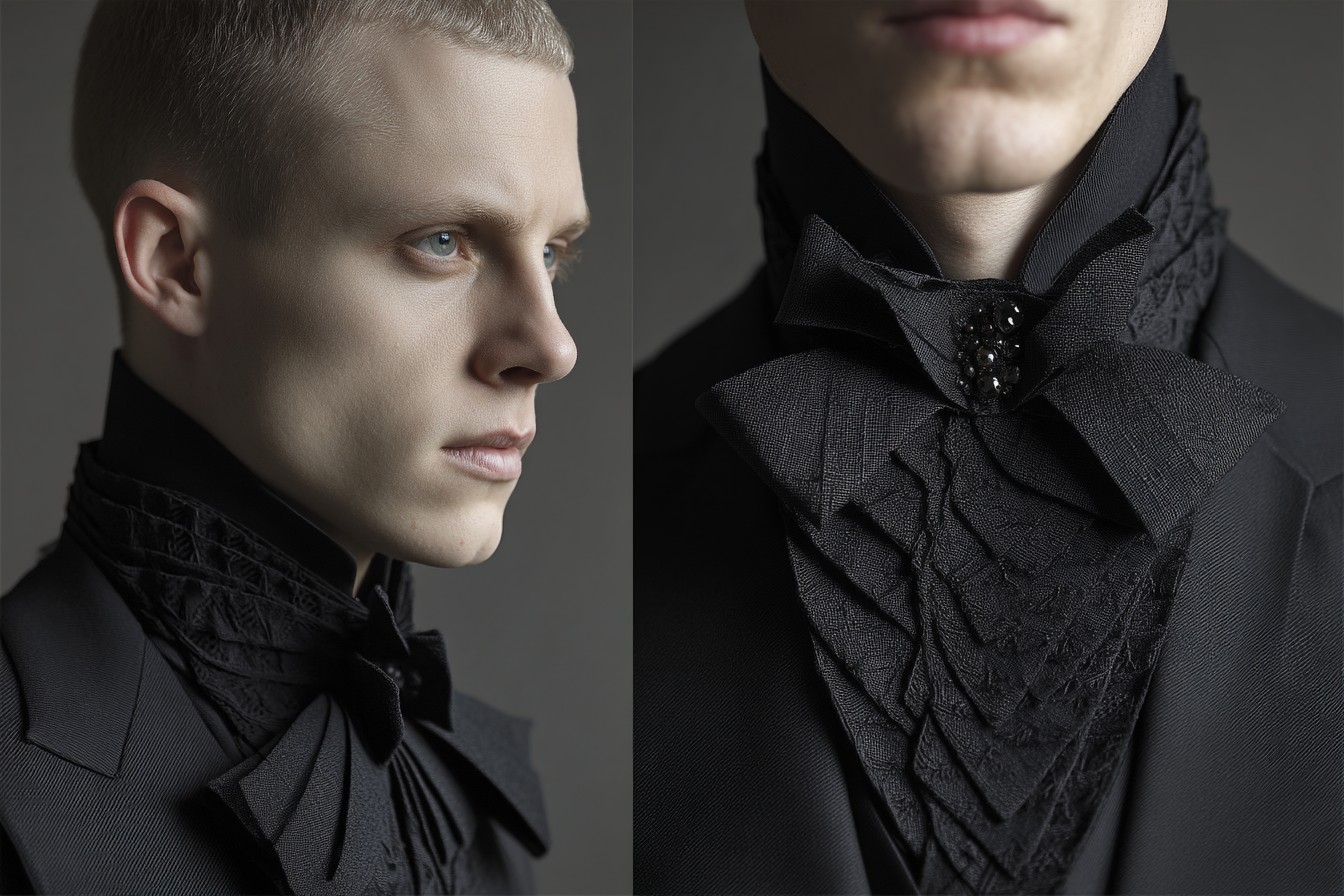The first time I walked down Savile Row, I was 19 and utterly terrified. I’d convinced the features editor at the student magazine to let me write a piece on “the heart of British tailoring,” which was really just an excuse to peek inside a world I’d been obsessing over since finding that old Jaeger suit in Dad’s wardrobe. I remember standing outside Anderson & Sheppard in a painfully cheap high street blazer that suddenly felt like it was made of cardboard and plastic, working up the courage to push open the door. When I finally did, a gentleman who looked like he’d been measuring inseams since the Crimean War raised a single eyebrow at me and asked if I was lost. I mumbled something about research for an article, went bright red, and promptly fled.

Twenty years and countless suits later, I still get a flutter of intimidation when I approach those hallowed doors, though these days they at least let me in without assuming I’ve taken a wrong turn from Topman. But I’ve also learned something important: while Savile Row represents the pinnacle of British tailoring—and Christ, the craftsmanship really is something else—it exists on a spectrum, not in isolation. There’s a whole world of exceptional British tailoring that doesn’t require a second mortgage or a family crest.
The reality is that a bespoke suit from one of the Row’s established houses will set you back anywhere from £4,000 to £7,000, depending on fabric and details. Made-to-measure starts around £2,500. These are investment pieces in the truest sense—they’ll last decades with proper care—but they’re simply not accessible for most of us, especially as an entire wardrobe solution rather than a once-in-a-lifetime purchase.
The good news? British tailoring excellence exists at more accessible price points if you know where to look. And I’ve spent an embarrassing portion of my adult life looking, testing, and occasionally getting it horribly wrong so you don’t have to.

Let’s start with the middle ground—what I think of as “accessible quality.” These are the brands and tailors offering genuine construction values and proper materials at prices that won’t require selling a kidney. They’re not cheap by any normal person’s standards (we’re still talking suits rather than streaming subscriptions here), but they represent genuine value when you consider cost-per-wear over their lifetime.
First up, there’s Anglo-Italian in Marylebone. Founded by former Trunk Clothiers buyer Jake Grantham and his business partner Alex Pirounis, it occupies this brilliant sweet spot between British structure and Italian softness. Their house style features a natural shoulder, a slightly lower buttoning point, and a garment that’s canvassed but not rigid. Made-to-measure suits start around £1,800, while ready-to-wear comes in at about £1,500. Not pocket change, clearly, but for something made with proper canvassing, cut from excellent cloths (many from the same British and Italian mills that supply Savile Row), it’s genuinely fair. I’ve had a navy hopsack from them for four years now, worn at least weekly, and it still looks better than most new suits.
Then there’s Whitcomb & Shaftesbury, which offers a fascinating model. Their Classic Bespoke service (starting around £1,800) uses a unique approach where the pattern is cut in London but much of the labor-intensive work is done in their workshop in Tamil Nadu, India, where they’ve trained local tailors in traditional techniques. The result is Savile Row quality at a significantly lower price point. Their full Savile Row Bespoke service (entirely made in London) is still about £3,400—not cheap, but significantly less than most Row options.

Drake’s, which began as a tiemaker before expanding into full menswear, offers made-to-measure starting around £1,500, with a natural English shoulder but a relaxed, contemporary cut. Their Games Suit in particular has developed a cult following—relaxed enough for modern life but still with the structure and shaping that makes British tailoring special.
For ready-to-wear with many of the construction values of bespoke, there’s the often-overlooked Chester Barrie. They’ve been making suits in Crewe since 1935, using traditional canvassing methods and excellent British cloths. Their mainline suits hover around the £800 mark—still a significant investment, but we’re talking about half-canvassed garments made in the UK from proper materials. I picked up one of their navy birdseye suits in a sale five years ago, and it’s still in regular rotation despite some frankly punishing treatment. (Note to self: carrying a curry takeaway inside your suit jacket is never a good idea, no matter how heavy the rain).
Another option that’s flown strangely under the radar is Paul Smith’s “A Suit To Travel In” range. While most of Smith’s tailoring is made in Italy these days, this specific line is constructed in Hebden Bridge, Yorkshire by Cookson & Clegg, a factory with over 150 years of history. At around £750, they’re half-canvassed, made from crease-resistant wool, and cut in a slim but not skinny silhouette that works for most body types. I’ve recommended these to countless friends who travel regularly for work—they can genuinely be rolled up in luggage, given a quick steam, and look presentable for meetings.

If you’re prepared to look beyond household names, Oliver Spencer’s Solms suits deserve attention. Spencer trained on Savile Row before launching his own brand, and while his mainline focuses on relaxed workwear, his tailoring maintains many traditional values. They’re around £580, feature a modern cut with natural shoulders, and use interesting textured fabrics that dress up or down easily. They’re not canvassed—at this price point, that would be miraculous—but they’re well-constructed with proper pattern matching and decent internals.
For those on tighter budgets who still want British-made options, Hammond & Co by Patrick Grant (available at Debenhams) offers a remarkable proposition. Grant, who owns Norton & Sons on Savile Row and revived E. Tautz, brings genuine tailoring expertise to the high street. While you’re not getting canvassing or super 150s wool at £250-£300, you are getting proper pattern cutting, decent fabrics, and a style informed by one of Britain’s best tailors. I’ve got one of their spring-weight blazers that’s survived three seasons of regular wear without losing its shape.
The made-to-measure market has also expanded dramatically in recent years, making customized tailoring accessible to more people. Cad & The Dandy, founded by two ex-bankers during the 2008 financial crisis, has disrupted the traditional model by offering three tiers of make: machine-cut and made (from £950), half-handmade (£1,200), and fully handmade (£2,000). Even their entry level uses floating canvassing rather than fusing, proper cloths from British mills, and is made in the UK.

Look beyond London and you’ll find regional tailors offering exceptional value. In Manchester, there’s Whitfield & Ward, where made-to-measure starts around £850 for half-canvassed construction. In Glasgow, Walker Slater offers ready-to-wear tweed and wool suits with surprisingly good construction for around £500. In Leeds, Michelsberg Tailoring provides full bespoke from around £1,300—significantly less than you’d pay for equivalent make in the capital.
What about the high street? Can you find anything approaching proper tailoring there? The honest answer is: occasionally, with caveats. Charles Tyrwhitt’s top-end suits hover around the £500 mark and are half-canvassed—a genuine quality marker that puts them above most competition at similar prices. Their cuts are conservative but well-executed. Marks & Spencer’s Savile Row-inspired range (around £300) isn’t canvassed but does feature decent wool blends and pattern cutting that belies the price. I keep one in my office for emergency meetings and it’s performed admirably for three years now.
Now, a word on construction, because this is where many get confused about what they’re actually paying for. A fully canvassed suit contains a layer of canvas (traditionally horsehair, though often now a mix of horsehair and other materials) between the outer fabric and lining. This canvas floats rather than being glued to the wool, allowing the suit to mold to your body over time and move naturally. It’s labor-intensive to create but results in a garment that actually improves with wear.

Half-canvassed means the canvas extends through the chest and lapels but not the full body—a good compromise at lower price points. Fused suits have their interlining glued to the wool, which is cheaper to produce but doesn’t allow the same movement, doesn’t breathe as well, and can bubble or delaminate over time, especially after dry cleaning.
When you’re paying Savile Row prices, you’re getting full canvassing, handwork in areas that create shape and structure (collar, lapels, armholes), hand-padded chest pieces, hand-sewn buttonholes, and a pattern cut specifically for your body. As you move down the price spectrum, these handwork elements decrease and machine work increases, but the better mid-range options maintain canvassing (even if half rather than full) and some degree of handwork in crucial areas.
For perspective on value, consider my own experience: I saved for years to commission a bespoke suit from Anderson & Sheppard for my wedding—a traditional 13oz navy worsted with all the handwork that makes Savile Row special. That was eight years and approximately 300 wears ago. It’s been altered twice as my waistline has embarked on its own journey of expansion and contraction. It still looks better than most new suits and should last another 20 years with care. That’s the true value equation of proper tailoring.
But I’ve also got suits from Anglo-Italian, Whitcomb & Shaftesbury, and Drake’s that have performed brilliantly for years at half the price. And I’ve been genuinely impressed by the longevity of that Chester Barrie ready-to-wear option that cost a quarter of bespoke.
What I’ve learned is that British tailoring isn’t just one thing at one price point—it’s a spectrum of options that maintain certain core values: structure with comfort, cloths that perform over time, and cuts that flatter rather than follow transient trends. Whether your budget stretches to The Row or peaks at the high street’s best efforts, there’s a version of these values available at every level if you look beyond obvious options and understand what you’re actually paying for.
The intimidating gentleman at Anderson & Sheppard eventually became a friend—though he still occasionally raises that same eyebrow when I turn up in something he considers questionable. The last time I visited, I was wearing that Anglo-Italian jacket. “Not one of ours,” he sniffed, running an expert hand over the lapel. “But decent work nonetheless.” From him, that’s practically a standing ovation. British tailoring excellence, it turns out, exists beyond those intimidating doors I once fled through—you just need to know where to look for it.

Leave a Reply